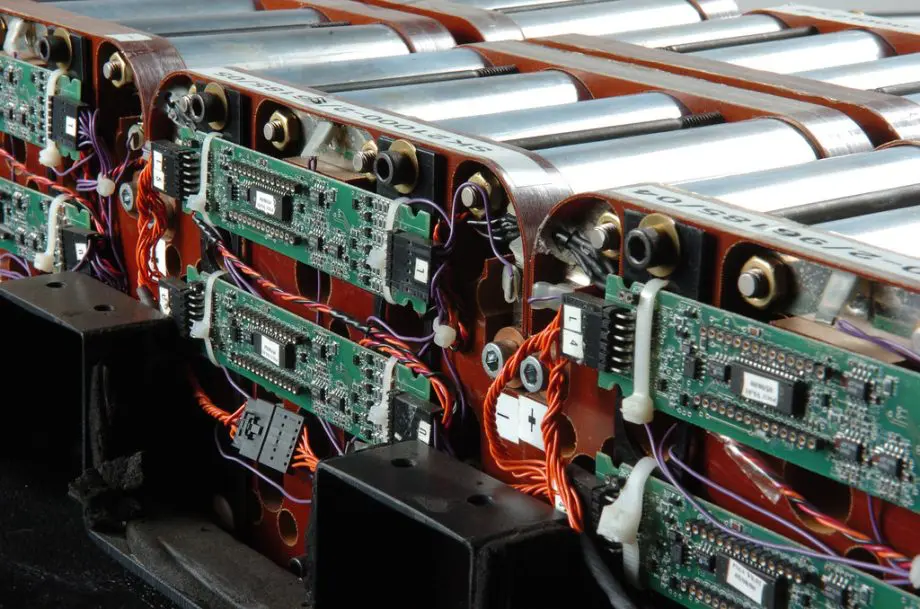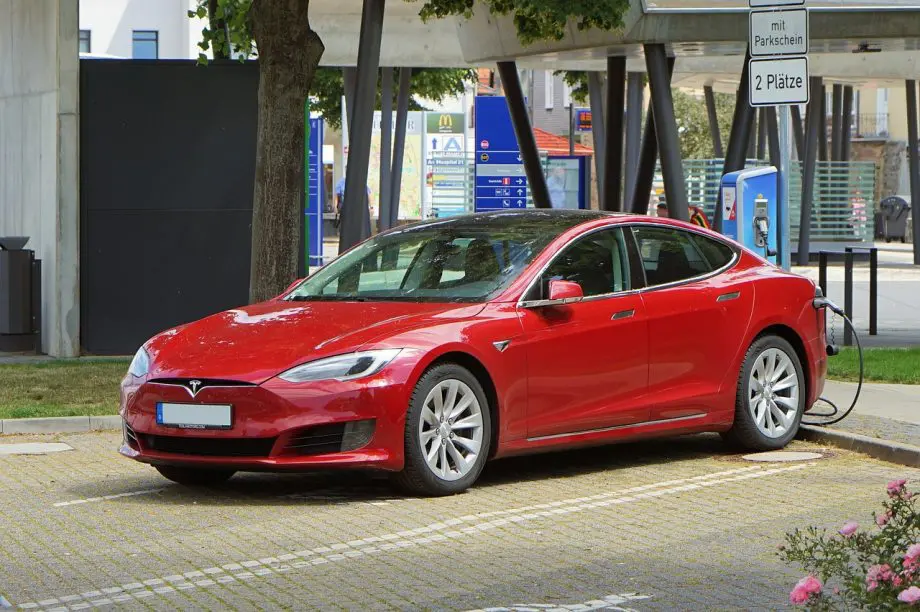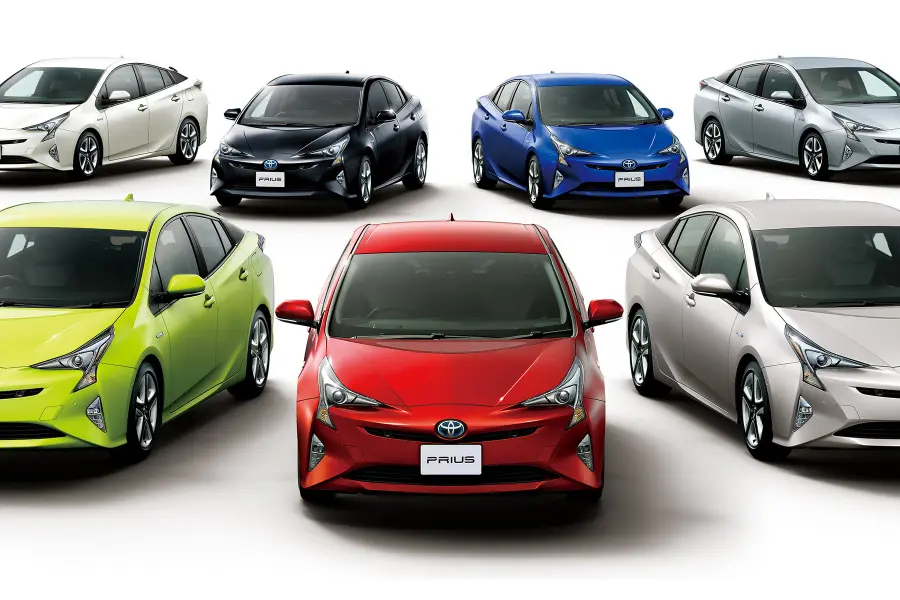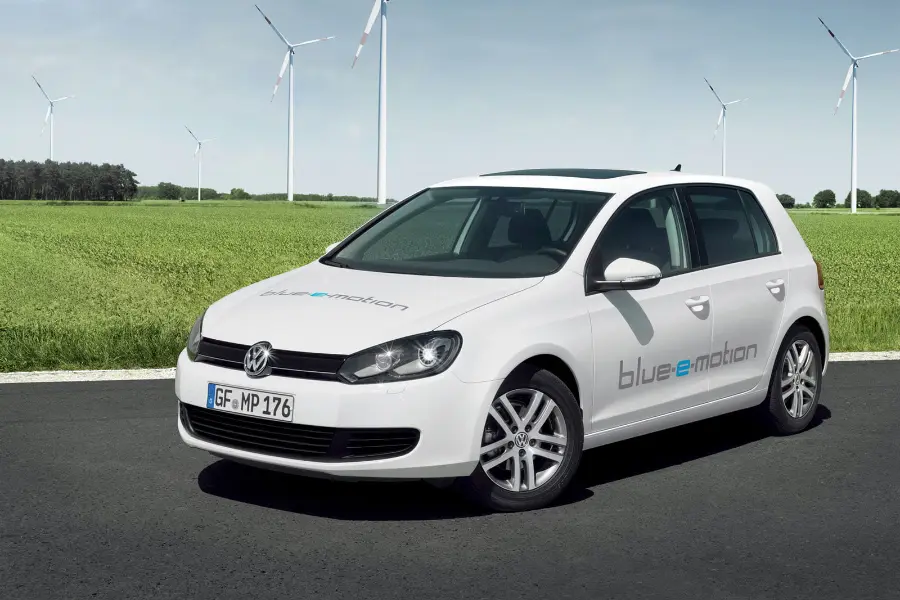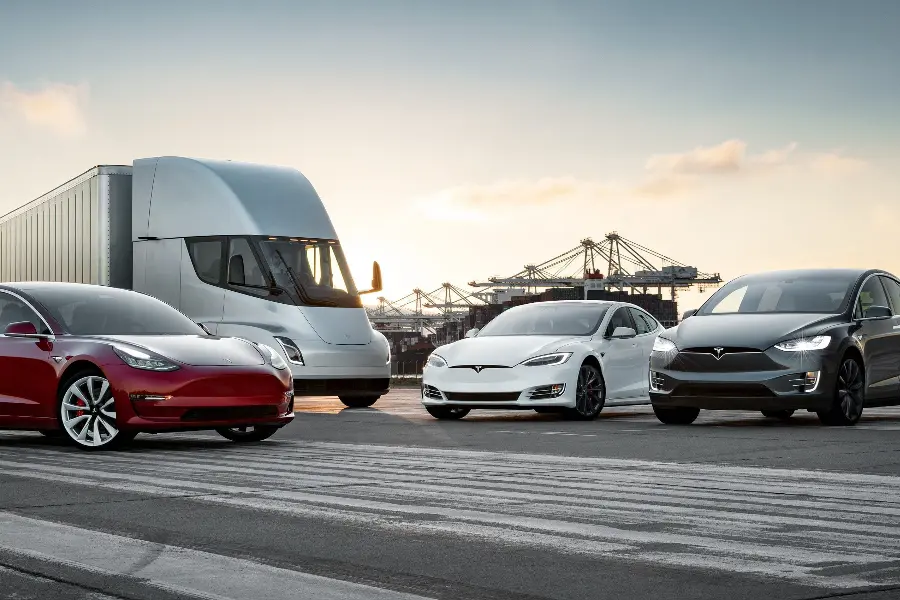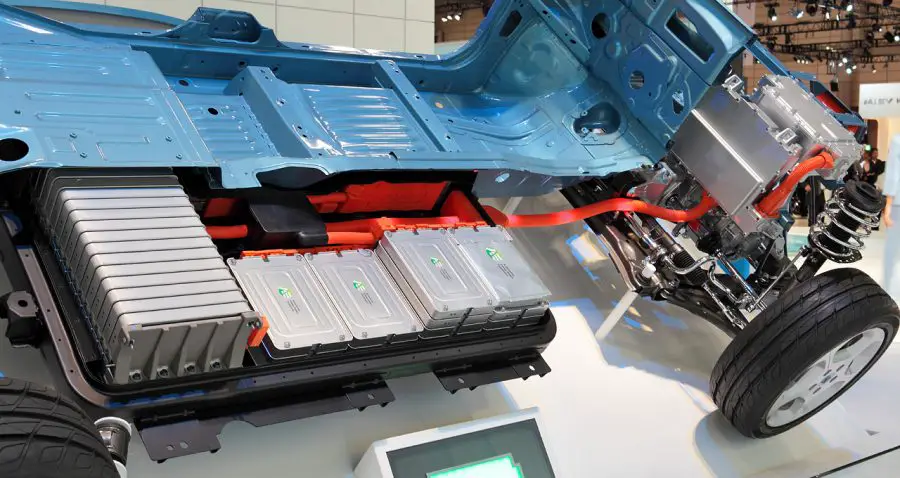
Explore the role of battery technology in electric vehicles! Dive into the basics, advancements, and future of EV batteries in our engaging guide.
Ever wondered about the role of battery technology in electric vehicles?
It’s like the heart in our bodies, vital, powerful, and continuously evolving.
As we journey into the electrified future of transportation, let’s uncover the magic behind these energy powerhouses that keep our wheels spinning!
The Role of Battery Technology in Electric Vehicles
Welcome to our deep dive into the fascinating world of electric vehicles, where the spotlight is on the unsung hero, battery technology.
From the basic workings of electric car batteries to the latest advancements, the challenges faced, and the impact on the EV market, we’ll cover it all.
We’ll even gaze into the crystal ball to see what the future holds for battery technology in electric vehicles. So buckle up and get ready for an electrifying journey!
The Importance of Battery Technology in Electric Vehicles
Imagine setting off on a road trip. You’ve got your snacks, your favorite playlist, and a clear road ahead.
But instead of stopping at the gas station, you plug your car into a charging station. That’s the power of electric vehicles (EVs), and at the heart of this power is battery technology.
It’s the game-changer, the key player, the piece of the puzzle that makes electric vehicles a viable and sustainable alternative to traditional fuel-powered cars.
Without advanced battery technology, we wouldn’t have EVs that can travel hundreds of miles on a single charge, or the potential to significantly reduce our carbon footprint.
So, let’s give a round of applause to battery technology, the unsung hero of the electric vehicle revolution!
The Current State of Battery Technology in EVs
Now, let’s talk about where we are today. The current state of battery technology in electric vehicles is a testament to years of research, innovation, and a whole lot of engineering genius.
Most EVs on the road today are powered by lithium-ion batteries, the same type of battery that powers your laptop or smartphone, but on a much larger scale.
These batteries are favored for their higher energy density, they can store a lot of energy relative to their weight.
This is crucial for keeping an electric vehicle light enough to be efficient, yet powerful enough to be practical.
But it’s not all smooth sailing. There are challenges to overcome, like improving the range, reducing charging times, and bringing down costs.
The good news? Brilliant minds all over the world are on the case, and the future of battery technology in EVs looks brighter than ever.
The Basics of Electric Vehicle Batteries
Ready to lift the hood and take a peek inside the world of electric vehicle batteries?
It’s a bit like stepping into a bustling city, where every component has a crucial role to play.
From the anode to the cathode, the separator to the electrolyte, and the current collectors, each part of an EV battery contributes to the smooth running of this energy metropolis.
Let’s roll up our sleeves and delve into the basics of these power-packed marvels that keep our electric vehicles humming along!
Components of an EV Battery
Let’s start our journey by meeting the key players in an EV battery.
Anode: Think of the anode as the starting line in a race. It’s where the action kicks off. In our battery city, the anode is where lithium ions are stored before they start their journey during discharge.
Cathode: The finish line of our race. Once the lithium ions have made their journey through the electrolyte, they reach the cathode. This is where the electricity we need to power our EVs is generated.
Separator: This is the peacekeeper of our battery city. It’s a thin piece of material that keeps the anode and cathode apart to prevent a short circuit, while still allowing lithium ions to pass through.
Electrolyte: The electrolyte is like the highway that lithium ions travel on from the anode to the cathode.
It’s a chemical medium that allows for the flow of electrical charge between the cathode and anode.
Current Collectors: These are the transport systems that take the electricity generated when lithium ions reach the cathode and direct it out of the battery to power the vehicle.
They’re like the roads and bridges that help the citizens of our city reach their destinations.
How an EV Battery Works
Now that we’ve met the key players, let’s see them in action. The process of how an EV battery works can be broken down into two main stages: charging and discharging.
Charging: During charging, electricity from the grid is used to drive lithium ions from the cathode, through the electrolyte, and into the anode.
This process stores energy in the battery, ready to be used when you drive.
Discharging: When you turn on your EV and hit the road, the stored energy needs to be released.
This happens during discharging. The lithium ions make the journey back through the electrolyte, from the anode to the cathode.
As they reach the cathode, electricity is generated and directed out of the battery to power the vehicle.
So, there you have it, a whirlwind tour of the bustling city that is an EV battery!
Types of Batteries Used in Electric Vehicles
Picture this: you’re at a car show, and instead of makes and models, the spotlight is on battery types.
Lithium iron phosphate, Lithium-ion, nickel-metal hydride, lead-acid – each one with its own unique features and performance characteristics.
Just like choosing between a sports car or an SUV, the type of battery used in an electric vehicle can greatly influence its performance, cost, and environmental impact.
So, let’s take a stroll down the battery boulevard and get to know the different types of batteries that power the electric motors in our electric vehicles!
Lithium-ion Batteries
First up on our battery boulevard are the lithium-ion batteries. These are the rockstars of the EV world, powering most of the electric cars you see on the road today.
Why are they so popular? Well, lithium-ion batteries have a high energy density, which means they can store a lot of energy relative to their weight.
This makes them perfect for electric vehicles, where keeping weight down is crucial for efficiency.
Plus, they have a pretty decent lifespan and can handle hundreds of charge and discharge cycles.
But like all rockstars, they do have their diva moments. They’re quite expensive to produce and have some environmental concerns related to the mining of lithium.
Nickel-metal Hydride Batteries
Next up, we have the nickel-metal hydride batteries. These are the old-school cool of the battery world.
Before lithium-ion batteries took center stage, nickel-metal hydride batteries were the go-to choice for hybrid vehicles.
They’re cheaper and easier to produce than lithium-ion batteries and are less harmful to the environment.
However, they have a lower energy density, which means they can’t store as much energy for their weight.
This makes them less suitable for fully electric vehicles that need to travel longer distances on a single full charge.
Lead-acid Batteries
Last but not least, we have lead-acid batteries. These are the veterans of the battery world, having been around for over 150 years.
You’ll find them in conventional cars, where they’re used to start the engine and power the lights and radio.
When it comes to electric vehicles, lead-acid batteries are typically used in lower-cost, low-speed EVs.
They’re cheaper than both lithium-ion and nickel-metal hydride batteries, but they’re also much heavier and have a lower energy density.
This means they can’t store as much energy for their weight, limiting the range of the vehicle.
So, whether it’s a lithium-ion, nickel-metal hydride, or lead-acid battery, each brings its own strengths and weaknesses to the table.
The key is finding the right balance to meet the needs of the vehicle and its driver.
Lithium Iron Phosphate (LFP) Batteries are the new kid on the block and are being adopted by electric car manufacturers and we will cover them in a bit.
NASA Lithium Ion Polymer Battery
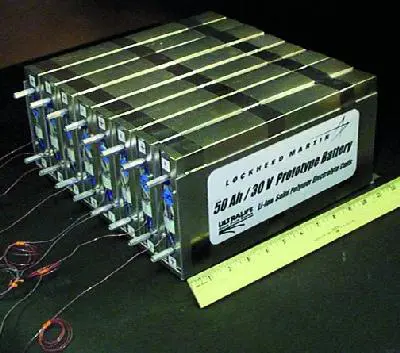
Advancements in Battery Technology
Imagine stepping into a time machine and fast-forwarding into the future of battery technology. What would you see?
Well, you don’t need a time machine to find out! The future is happening right now, with incredible advancements in battery technology unfolding before our eyes.
From boosting energy density to developing new battery technologies, the world of EV batteries is a hotbed of innovation.
So, let’s dive in and explore the cutting-edge advancements that are shaping the future of electric vehicles!
Improvements in Energy Density and Power Density
One of the biggest advancements in battery technology is the improvement in energy density and power density.
Energy density is the amount of energy a battery can store for a given weight, while power density is the rate at which that energy can be delivered.
Think of energy density as the size of your fuel tank and power density as the horsepower of your engine.
Improvements in these areas mean that EV batteries can store more energy and deliver it faster, leading to longer ranges and better performance.
This is a big deal in the EV world, as it helps to overcome one of the main barriers to EV adoption: range anxiety.
Developments in Lithium-ion Technology
Lithium-ion technology has been the backbone of the EV revolution, and it’s still evolving.
Recent developments have focused on improving the efficiency and lifespan of lithium-ion batteries, as well as making them safer and more environmentally friendly.
For example, researchers are exploring new materials for the cathode and anode that can store more energy and charge faster.
There’s also a lot of work being done to improve the safety of lithium-ion batteries and reduce the risk of battery fires.
Emerging Battery Technologies
While lithium-ion batteries are currently leading the charge, there are several emerging battery technologies that could potentially revolutionize the EV industry.
In recent years one of the most promising is solid-state batteries. Unlike traditional batteries that use a liquid electrolyte, a solid-state battery uses a solid electrolyte, which can improve safety and potentially offer higher energy densities.
Other emerging new technologies include lithium-sulfur batteries, which could offer even higher energy densities than lithium-ion batteries, and sodium-ion batteries, which could be a cheaper and more environmentally friendly alternative.
These technologies are still in the early stages of development, but they offer a tantalizing glimpse into the future of EV batteries.
Lithium Iron Phosphate (LFP) Batteries: A Safer and Durable Power Solution for Electric Vehicles
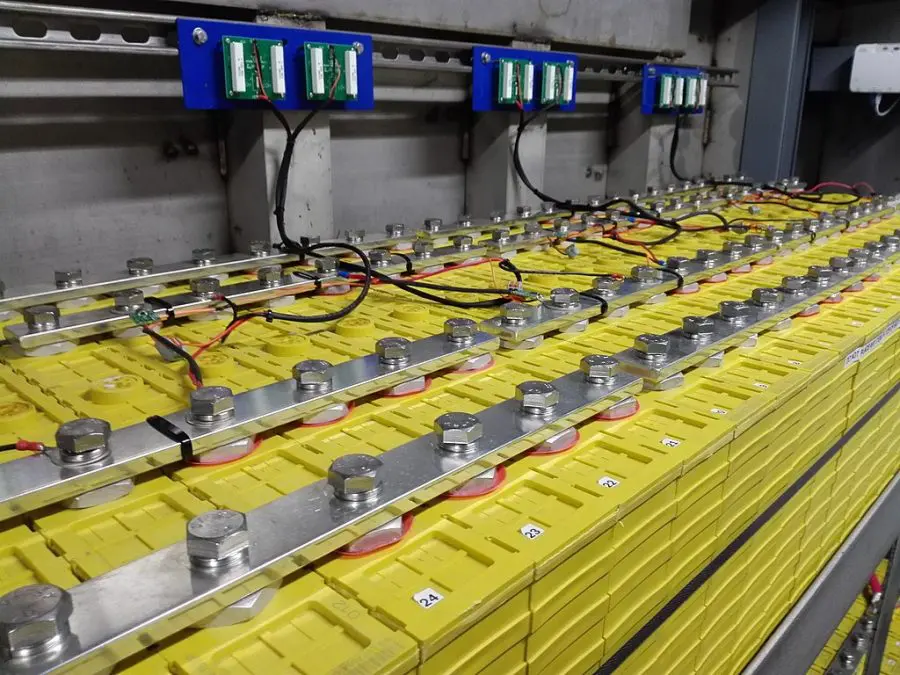
Lithium iron phosphate (LiFePO4 ) is a type of lithium-ion battery that has been gaining popularity, particularly in the electric vehicle industry.
What sets LFP batteries apart is their unique chemistry. They use iron phosphate for the cathode, along with a lithium salt for the electrolyte.
This combination offers several advantages. Firstly, LFP batteries are known for their long life cycles, which means they can be charged and discharged many times over their lifespan without significant degradation.
Secondly, they have a lower risk of overheating and are therefore considered safer than some other types of lithium-ion batteries.
Lastly, they are more environmentally friendly, as iron phosphate is less harmful than the cobalt used in other lithium-ion batteries.
However, they do have a lower energy density, which means they can’t store as much energy for their size compared to other types of batteries.
Despite this, their safety and durability make them a promising option for electric vehicles.
There are lower costs for disposal because iron is less toxic to the environment than cobalt used in traditional li-ion batteries.
Currently, both Tesla and Ford are using (LFP) Batteries.
Challenges in Battery Technology
Every hero has its challenges, and battery technology is no exception.
While it’s been making leaps and bounds in the world of electric vehicles, it’s also been facing a few hurdles along the way.
From energy storage capacity to charging times, lifespan, and cost, these challenges are like the villains in our story.
But with every challenge comes an opportunity for innovation. So, let’s delve into these challenges and see how they’re shaping the next chapter in the story of battery technology.
Energy Storage Capacity
One of the biggest challenges in battery technology is energy storage capacity.
This is essentially how much energy a battery can store, and it directly impacts the range of an electric vehicle.
The higher the energy storage capacity, the further an EV can travel on a single charge.
While we’ve seen significant improvements in this area, there’s still a lot of work to be done.
The goal is to develop batteries that can store more energy without increasing the size or weight of the battery, and that’s a tough nut to crack.
Charging Time
Another challenge is charging time. While it’s possible to charge an EV at home overnight, charging on the go can take a lot longer than filling up a gas tank.
This can be a deterrent for potential EV buyers who are worried about getting stranded with a dead battery.
The good news is that fast-charging technology is improving, and there are now chargers that can get an EV to 80% charge in as little as 30 minutes.
But we’re still a long way from being able to ‘fill up’ an EV as quickly as a conventional car.
Battery Lifespan and Degradation
Battery lifespan and degradation are another challenge. Over time, the performance of batteries decreases, and they can’t hold as much charge.
This means the range of the EV decreases over time. While most EV manufacturers offer warranties on their batteries, degradation can still be a concern for potential buyers.
Researchers are working on ways to improve the lifespan of batteries and reduce degradation, but it’s a complex issue that requires a lot of research and development.
Cost of Batteries
Finally, there’s the cost of batteries. Batteries are one of the most expensive components of an electric vehicle, and they play a big role in the overall cost of EVs.
While the cost of batteries has been falling, it’s still a significant barrier to the wider adoption of electric vehicles.
The goal is to bring down the cost of batteries without compromising performance, and that’s a big challenge.
But with more investment in research and development and economies of scale, as more people switch to EVs, we’re likely to see the cost of batteries continue to fall in the future.
Disposal and Recycling of Batteries
The disposal and recycling of batteries present another significant challenge.
As the number of EVs on the road increases, so too does the number of batteries that will eventually need to be disposed of.
Currently, recycling processes for EV batteries can be costly and energy-intensive.
Moreover, not all components of the battery are recoverable, leading to waste.
There are also environmental concerns associated with battery disposal. If not properly managed, discarded batteries can lead to soil, water, and air pollution.
However, efforts are being made to address these issues. New recycling technologies and processes are being developed to make battery recycling more efficient and less harmful to the environment.
Traditional lithium-ion batteries are being replaced by less harmful LFP batteries by some major companies.
Some companies are also exploring ways to repurpose used EV batteries for energy storage, which could extend their useful life and reduce the need for disposal.
Despite these challenges, the importance of proper battery disposal and recycling cannot be overstated.
It is a critical aspect of making electric vehicles a truly sustainable transportation option.
The Impact of Battery Technology on the EV Market
Imagine a world where electric vehicles are as common as smartphones, where charging stations are as ubiquitous as gas stations, and where the air is cleaner because fewer fossil fuels are being burned.
This isn’t just a dream it’s the near future that battery technology is helping to create.
But how exactly is battery technology impacting the EV market?
From influencing consumer decisions to driving industry trends, let’s explore the powerful role battery technology plays in shaping the EV market.
From the U.S department of Energy: Improving the batteries for electric drive vehicles, including hybrid electric (HEV) and plug-in electric vehicles (PEV) , is key to improving vehicles’ economic, social, and environmental sustainability. In fact, transitioning to a light-duty fleet of HEVs and PEVs could reduce U.S. foreign oil dependence by 30-60% and greenhouse gas emissions by 30-45%, depending on the exact mix of technologies.
The Role of Battery Technology in the Adoption of Electric Vehicles
Battery technology plays a pivotal role in the adoption of electric vehicles.
It’s like the heart of the EV, pumping energy into every part of the vehicle.
The performance, range, charging time and cost of an EV are all heavily influenced by the battery technology it uses.
When potential buyers consider switching to an electric vehicle, one of the first things they look at is the range or how far the vehicle can travel on a single charge.
This is directly tied to the energy storage capacity of the battery. The more advanced the battery technology, the longer the range, making the EV a more attractive option.
Charging time is another key factor. The faster an EV can charge, the more convenient it is to use, especially for long trips.
Again, this is where battery technology comes in. Advances in battery technology are helping to reduce charging times, making EVs more user-friendly.
Finally, there’s the cost. Batteries are one of the most expensive parts of an EV, so the cost of battery technology has a big impact on the overall cost of the vehicle.
As battery technology improves and becomes cheaper, the cost of EVs will come down, making them more accessible to more people.
How Advancements in Battery Technology Can Influence the EV Market
Advancements in battery technology don’t just influence the adoption of electric vehicles, they also have a big impact on the EV market as a whole.
For example, as battery technology improves, we’re seeing a wider range of EVs becoming available, from compact city cars to SUVs and trucks.
This means more choices for consumers, which helps to drive further adoption of EVs.
Improvements in battery technology can also lead to new business opportunities.
For example, as the lifespan of batteries improves, there could be opportunities for using second-life batteries for energy storage.
Furthermore, advancements in battery technology can influence policies and infrastructure development.
As the range of EVs increases and charging times decrease, there will be a need for more charging infrastructure, which can lead to investment and job creation in this area.
In short, advancements in battery technology are not just improving the performance of electric vehicles, they’re reshaping the entire EV market.
The Future of Battery Technology in Electric Vehicles
Fasten your seatbelts, because we’re about to take a thrilling ride into the future of battery technology in electric vehicles!
This isn’t just about the next big thing in EVs, it’s about the ongoing journey of innovation and discovery.
From potential breakthroughs that could revolutionize how we store and use energy, to the role of research and development in driving these advancements, the road ahead is filled with exciting possibilities.
So, let’s hit the accelerator and explore what the future might hold for battery technology in electric vehicles!
Potential Breakthroughs in Battery Technology
As we cruise into the future of battery technology, there are several potential breakthroughs on the horizon that could revolutionize the way we power our electric vehicles.
One of the most promising is the development of solid-state batteries.
These batteries replace the liquid or gel electrolyte found in current lithium-ion batteries with a solid material, which could potentially offer higher energy densities, faster charging times, and improved safety.
Another exciting area of research is the development of lithium-sulfur batteries.
These batteries could potentially offer even higher energy densities than lithium-ion batteries, which could significantly increase the range of electric vehicles.
There’s also a lot of interest in the development of batteries that use alternative materials.
For example, sodium-ion batteries could offer a cheaper and more environmentally friendly alternative to lithium-ion batteries, while batteries that use air and metal could potentially offer very high energy densities.
The Role of Research and Development in Advancing Battery Technology
Research and development play a crucial role in driving these potential breakthroughs in battery technology.
From universities and research institutes to startups and major automakers, there are countless teams around the world working on developing the next generation of EV batteries.
These research and development efforts are focused on a range of areas, from exploring new materials and designs for batteries to improving the manufacturing processes for batteries, to developing better ways to recycle and dispose of batteries.
Government funding and policy also play a crucial role in supporting research and development in battery technology.
For example, many governments offer grants and tax incentives for research into new battery technologies, and some have set ambitious targets for the adoption of electric vehicles, which helps to drive demand for better batteries.
In short, while there are many exciting potential breakthroughs in battery technology on the horizon, it’s the ongoing efforts of researchers and developers that will turn these possibilities into reality.
Battery Technology in Electric Vehicles FAQs
Got questions about battery technology in electric vehicles? You’re not alone!
This is a complex topic with lots of moving parts, and it’s natural to have a few queries.
So, we’ve compiled some of the most frequently asked questions about battery technology in EVs.
From the latest advancements to the challenges we face, let’s dive into these FAQs and shed some light on this electrifying topic!
Q: What is the new battery technology for electric cars?
A: One of the most promising new battery technologies for electric cars is solid-state batteries.
Unlike traditional batteries that use a liquid or gel electrolyte, solid-state batteries use a solid material.
This could potentially offer higher energy densities, faster charging times, and improved safety.
However, it’s worth noting that while solid-state batteries are very promising, they’re still in the early stages of development and are not yet widely used in electric vehicles.
Q: Who has the best battery technology for EV?
A: It’s difficult to say definitively who has the best battery technology for electric vehicles as it can depend on various factors such as the specific needs of the vehicle and the priorities of the driver.
However, companies like Tesla, with their advanced lithium-ion batteries and focus on continual innovation, are often recognized for their leading role in EV battery technology.
Other companies such as Toyota are also making significant strides, particularly in the development of solid-state batteries.
Q: What is the problem with using batteries to power electric cars?
A: While batteries have enabled the rise of electric vehicles, they also present several challenges.
These include the energy storage capacity of the batteries (which affects the range of the vehicle), the time it takes to charge the batteries, the lifespan and degradation of the batteries, and the cost of the batteries.
There are also environmental concerns related to the mass production and disposal of batteries.
However, ongoing research and development are aimed at addressing these challenges.
Q: Is electric car battery technology improving?
A: Absolutely! Electric car battery technology is improving at a rapid pace.
We’re seeing continual improvements in energy density (which can increase the range of electric vehicles), charging times are getting faster, and the cost of batteries is falling.
There are also exciting new battery technologies being developed, such as solid-state batteries, which could potentially offer significant advantages over current lithium-ion batteries.
So, while there are still challenges to overcome, the future of electric car battery technology looks very promising.
The Role of Battery Technology in Electric Vehicles Conclusion
As we pull into the final stretch of our journey exploring battery technology in electric vehicles, it’s time to reflect on what we’ve learned.
From the inner workings of EV batteries to the exciting advancements on the horizon, it’s clear that battery technology is at the heart of the electric vehicle revolution.
But before we switch off the ignition, let’s take a moment to recap the importance and impact of battery technology in EVs and share some final thoughts on what the future might hold.
The Importance and Impact of Battery Technology in Electric Vehicles
Battery technology is the driving force behind the electric vehicle revolution.
It’s the heart of an EV, powering everything from the motor to the onboard electronics.
The importance of battery technology in electric vehicles cannot be overstated.
It influences everything from the range of the vehicle to the charging time, cost, and overall performance of the EV.
The impact of battery technology on the EV market is also significant.
It’s shaping consumer choices, driving industry trends, and even influencing government policies and infrastructure development.
As battery technology continues to improve, we can expect to see a wider range of EVs available, more charging infrastructure, and hopefully, more people making the switch to electric vehicles.
Final Thoughts on the Future of Battery Technology in EVs
Looking to the future, the road ahead for battery technology in electric vehicles is exciting.
With potential breakthroughs like solid-state batteries on the horizon, the future of EVs looks bright.
However, it’s important to remember that these advancements won’t happen overnight.
They will require ongoing research and development, investment, and a commitment to overcoming the challenges that lie ahead.
But if there’s one thing we’ve learned from the story of battery technology so far, it’s that innovation is unstoppable.
With every challenge comes an opportunity for innovation, and with every innovation, we move one step closer to a future where electric vehicles are the norm, not the exception.
So, here’s to the future of battery technology in electric vehicles – it’s a journey we’re excited to be a part of!


